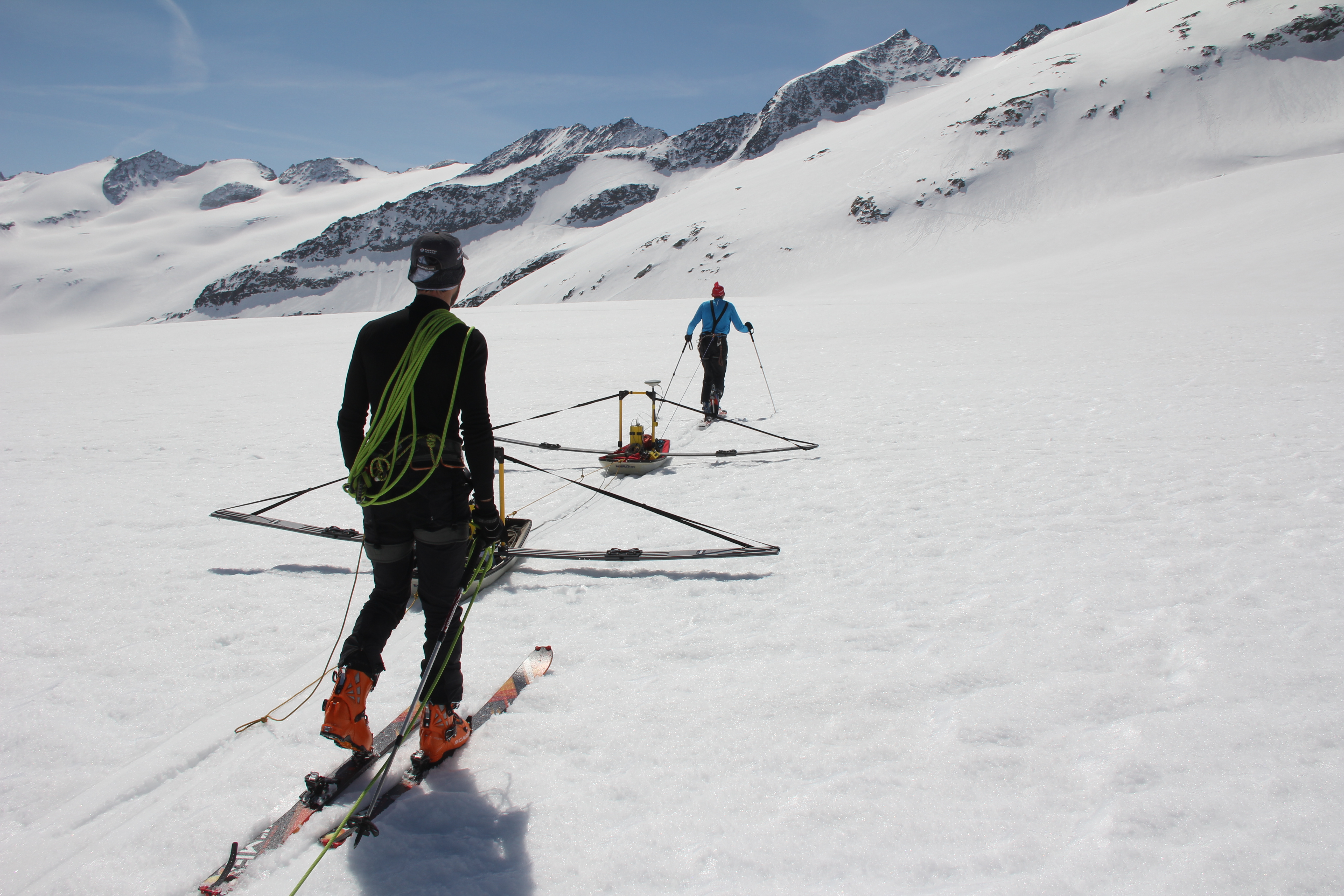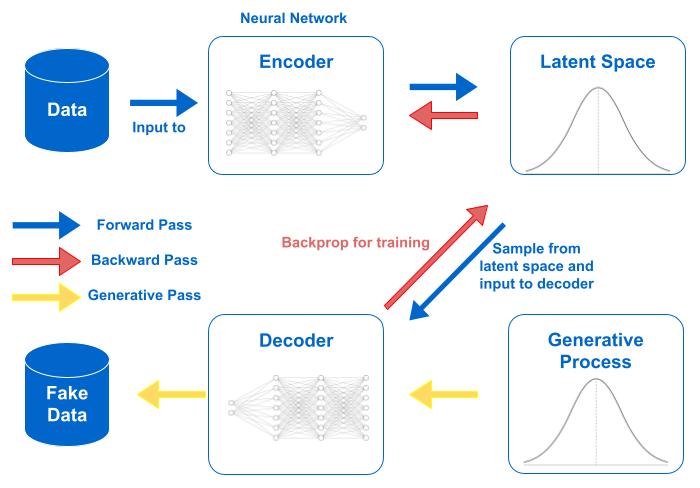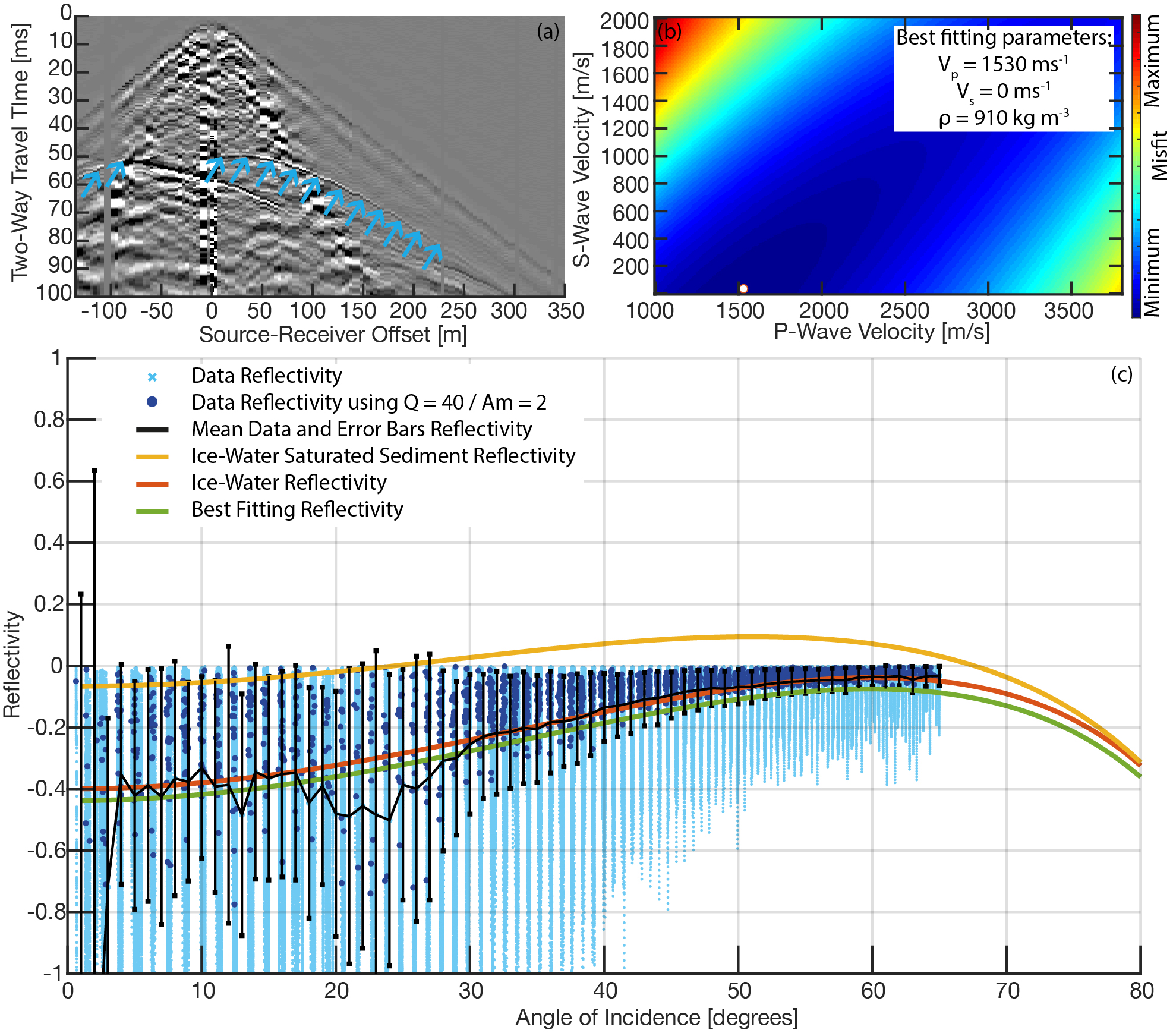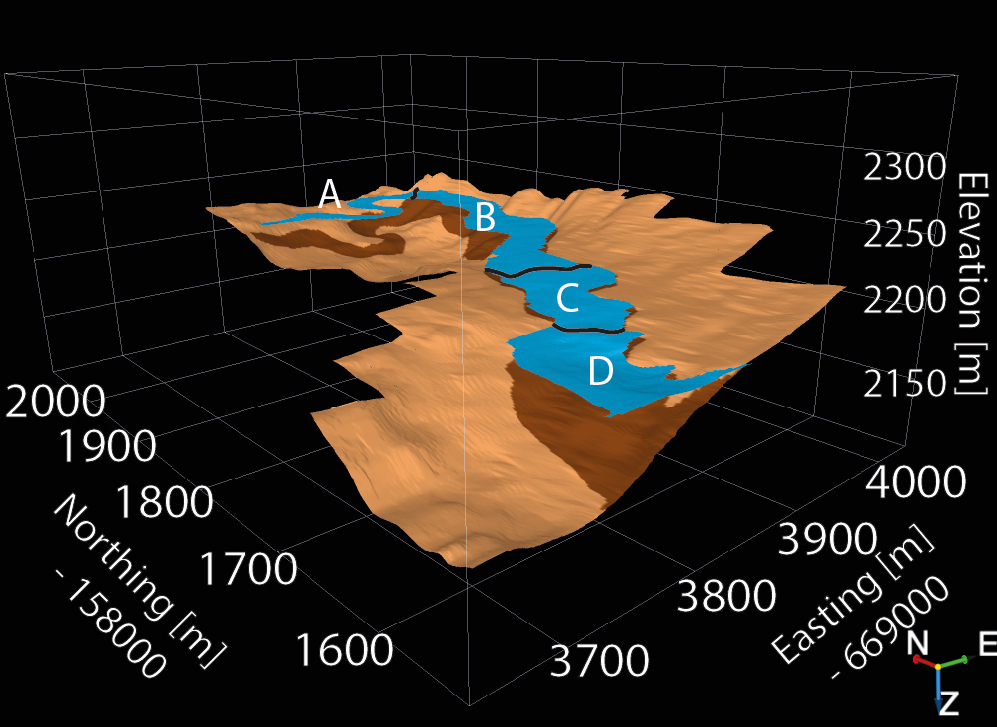Monitoring the seasonal changes of an englacial conduit network using repeated
ground-penetrating radar measurements
The Cryosphere, 2020, 14(10), pp. 3269–3286

Englacial conduits act as water pathways to feed surface meltwater into the subglacial
drainage system. A change of meltwater into the subglacial drainage system can alter
the glacier’s dynamics. Between 2012 and 2019, I performed repeated ground-penetrating
radar (GPR) surveys over an active englacial conduit network. The GPR data were processed
using an impedance inversion workflow to determine the conduit’s infill material. The spatial and temporal
evolution of the impedance inversion provided insights into the morphology of the
Rhonegletscher’s englacial conduit network. During the summer melt seasons, we observed an
active, water-filled, sediment-transporting englacial conduit network. We speculate
that extensional hydraulic fracturing is responsible for the formation of the conduit
as a result of the conduit network geometry observed and borehole observations. During
the winter periods, the englacial conduit no longer transports water and either physically
closed or be came very thin. Furthermore, the englacial conduit reactivated during the
following melt season at an identical position as in the previous year.

 I am Greg, a data scientist intern at Roche working on using deep learning to syntheise
clinical tabular data.
I am Greg, a data scientist intern at Roche working on using deep learning to syntheise
clinical tabular data.





